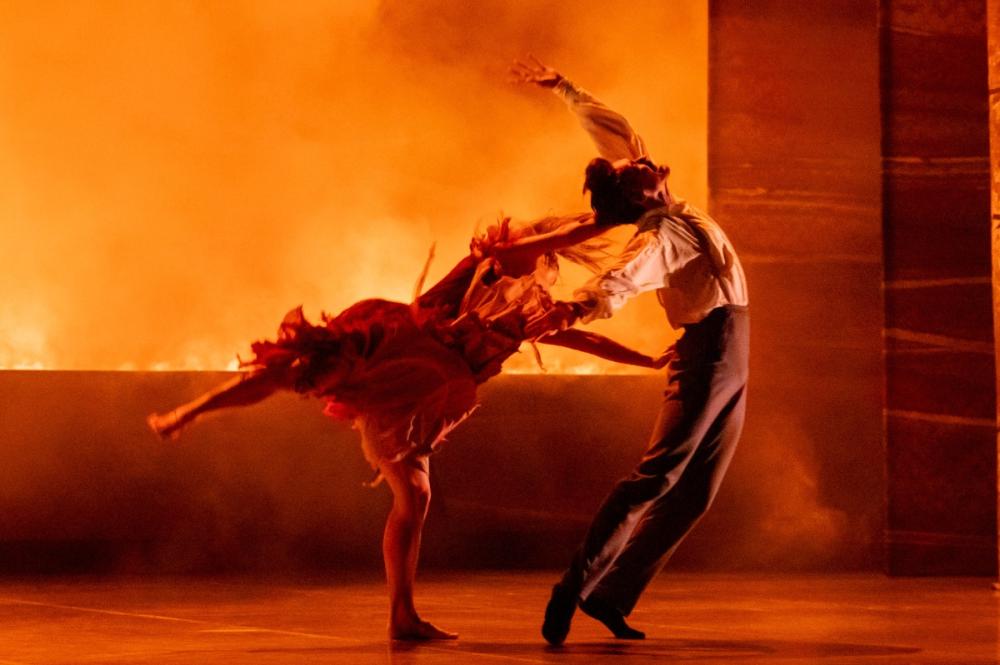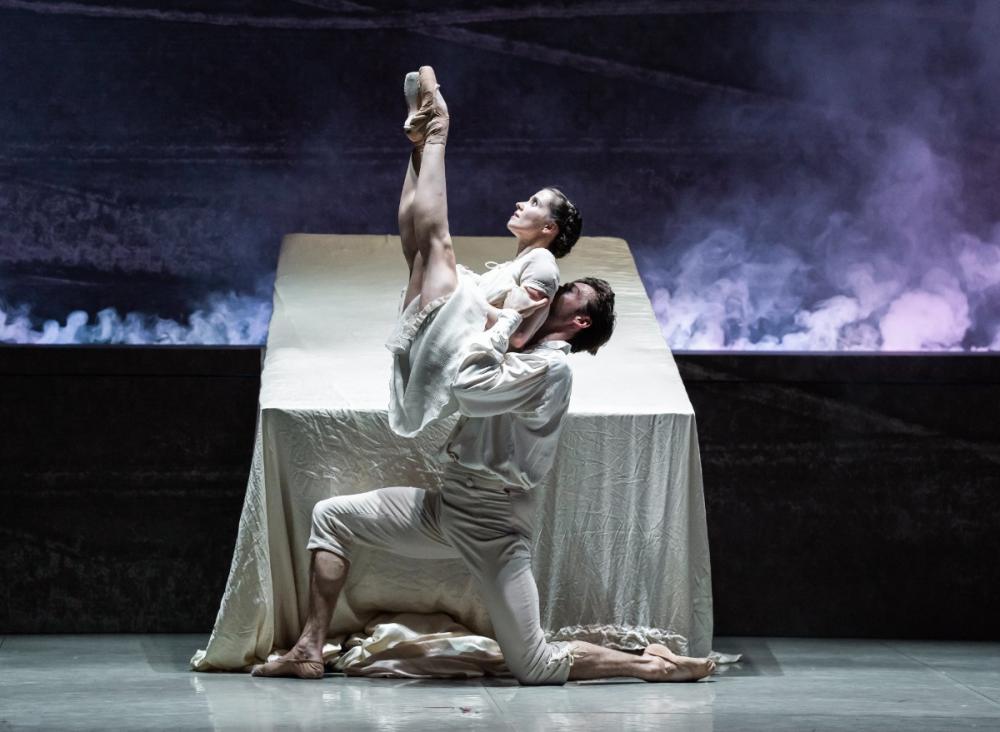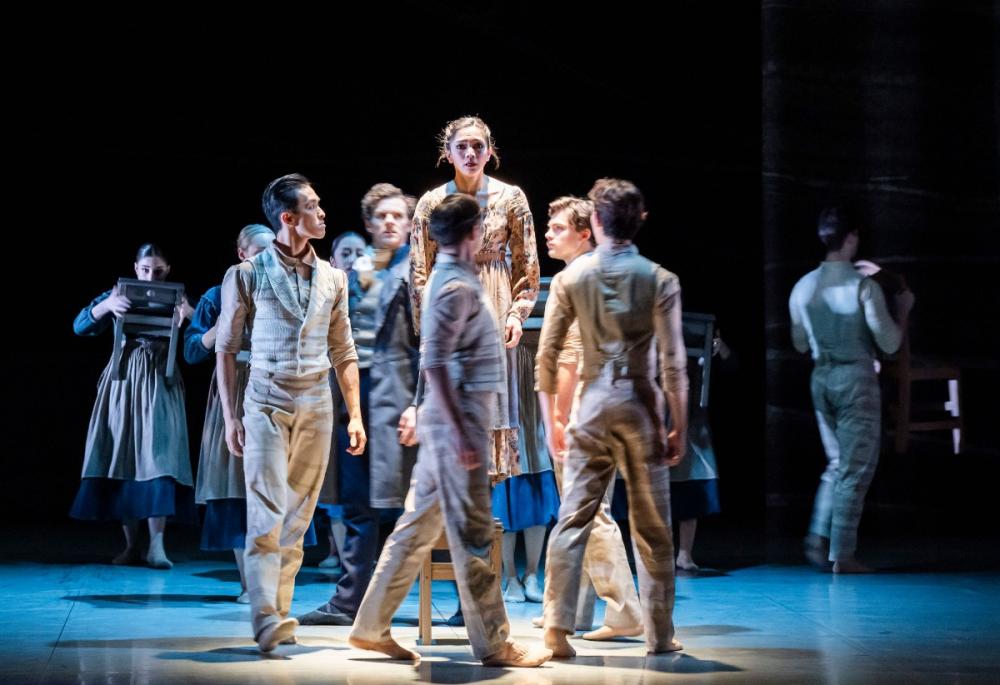
Claire Clarke, Dance Correspondent
Jane Eyre A Bold Move
![Amber Lewis and Joseph Taylor in Jane Eyre.
Photo Colleen Mair©]()
Amber Lewis and Joseph Taylor in Jane Eyre.
Photo Colleen Mair©
Taking on any classic novel for interpretation into a narrative ballet strikes me as a bold move. With well-loved texts comes an audience with strong opinions on characters and themes making them potentially hyper-critical of another person’s vision of the story. For me, Charlotte Bronte’s
Jane Eyre is a perfect example of this;
Jane Eyre is for me a place of safety when times are tough, and since first reading it as a teenager, I’ve revisited the text too many times to count, along with almost every other Bronte novel and the biggest biography I’ve ever hefted around as bedtime reading. So, much as I was looking forward to the ballet, I was also very aware that I would need to remind myself to keep an open mind and take it on its own merits, rather than on my own preconceptions.
At first I found this very difficult. Cathy Marston’s ballet is really focused on Jane’s adult life, and in particular, her growth into independence and her blossoming relationship with Edward Rochester, meaning that huge passages from the book have to be condensed down into brief vignettes or excluded entirely.
This was cleverly achieved by the opening scene which is taken from an incident that happens close to the end book - Jane’s flight from Thornfield Hall leading to her collapse and subsequent rescue by the Rivers family. Jane’s story then unfolds retrospectively to provide us with the context of a child orphaned at a young age and taken in by an aunt who sees her as an inconvenient duty.
Jane Eyre Credits:
Choreography, Direction & Scenario: Cathy Marston
Set and Costume Design & Scenario: Patrick Kinmonth
Lighting Design: Alastair West
Music Compiled and Composed by: Philip Feeney
Based on the novel by: Charlotte BrontëSocially awkward and highly intelligent, Jane has no social status and therefore no protection from the negligence and mistreatment she suffers at the hands of her callous aunt and spoiled cousins. Rachel Gilespie’s young Jane has a keen sense of justice paired with a passionate and undisciplined nature. Head lowered and fists clenched, she retaliates with physical outbursts against her abusers, earning herself the label of wild and dangerous. In this interpretation, different dancers play Jane as a child and as an adult. The child Jane is a very different person from the adult she makes herself into; angry, proud, volatile and impassioned.
![Dominique Larose and Joseph Taylor in Jane Eyre.
Photo Tristram Kenton©]()
Dominique Larose and Joseph Taylor in Jane Eyre.
Photo Tristram Kenton©
Jane is eventually shipped off to a boarding school where she learns through brutal experience to control her emotions by burying them deep within herself. Inspired by her first true friend, Helen Burns, Jane learns the art of forbearance and self control, though she never achieves Helen’s humility. Once mastered, Jane’s self-repression is a recurrent theme that is illustrated by the act of bringing her hands together to physically push down her feelings. But just because Jane keeps her feelings confined, doesn’t mean she’s given up on them, and her desire for more keeps her on the move until she finds herself at Thornfield Hall as a governess of Mr Rochester’s ward.
Jane’s youth is scarred by a lack of love and she learns early that the only person she can count on is herself. Thus, Jane’s relationship with Rochester is built on a delicate foundation - she falls for him, but she doesn’t trust him.
Rochester’s magnetism physically stops Jane in her tracks - he repeatedly prevents her from leaving his presence with an imperious stretching of his leg in her direction. Sprawled in his chair, Joseph Taylor’s Rochester appears aloof and disinterested, but his attention is totally on Jane. He’s fascinated by her and frustrated by her determination to resist his pull.
Jane is aware of her relative powerlessness; her gender, class, and poverty make her vulnerable, but she is steadfast in her refusal to compromise herself. This conflict plays out so clearly with each encounter becoming a blend of push and pull, fear and yearning, falling into and running from. Jane’s instinct for self preservation means that again and again Rochester has to catch her and bring her back to him. When she gives herself to Rochester, she does so on her own terms.
![Rachael Gillespie in Jane Eyre.
Photo Tristram Kenton]()
Rachael Gillespie in Jane Eyre.
Photo Tristram Kenton
As their relationship grows, a playfulness develops and we see a glimpse of what Jane would have been as a happy child. Her quickness and lightness of foot are used to trip him up, getting right into Rochester’s space, taking him by surprise and creating touching moments of tenderness and intimacy. At the same time, the stiff hands and angular shapes that characterise much of Jane’s movement start to soften as she opens herself to this new connection. Dominique Larose expresses this tension with every fibre and it was at this point that I was fully able to forget about the original text to focus completely on the music and movement.
As Jane and Rochester fall in love their different status is a minor obstacle; as a powerful and wealthy man, Rochester is able to make his choice of bride. But the frequent placing of their palms together brought to mind Romeo and Juliet’s ‘palm to palm’ - a reminder that these lovers are also from different sides of the track.
![Rachael Gillespie in Jane Eyre. Photo Emily Nuttall]()
Rachael Gillespie in Jane Eyre. Photo Emily Nuttall
With Jane being such a powerful presence throughout there aren’t many opportunities for other characters to shine. But if you can tear your eyes away from her, you’ll see characters fully fleshed, even if they are simply schoolgirls in a classroom or guests at one of Rochester’s parties. Mrs Reed is stern and unbending, Helen Burns the epitome of grace in the face of persecution, Mrs Fairfax kindly but flustered, and Adele superficial but sweet. Amber Lewis’s Bertha Mason revels in her ability to cause destruction. She’s a figure of foreboding, and a 19th-century warning of what happens when women’s passions are not contained by social mores.
The final scene is fully focused on Jane. She might have won her man, but that’s not what the story is about; it’s not a fairytale ending. Jane has moved out of her customary shadows and is taking her place in the spotlight, looking to the future with new confidence.
Jane Eyre national tour dates 2025
Leeds Grand Theatre 14 – 22 March
leedsheritagetheatres.com
Nottingham Theatre Royal 8 - 12 April
trch.co.uk
Sheffield Lyceum Theatre
22 – 26 April
Sheffieldtheatres.co.uk




.jpg)